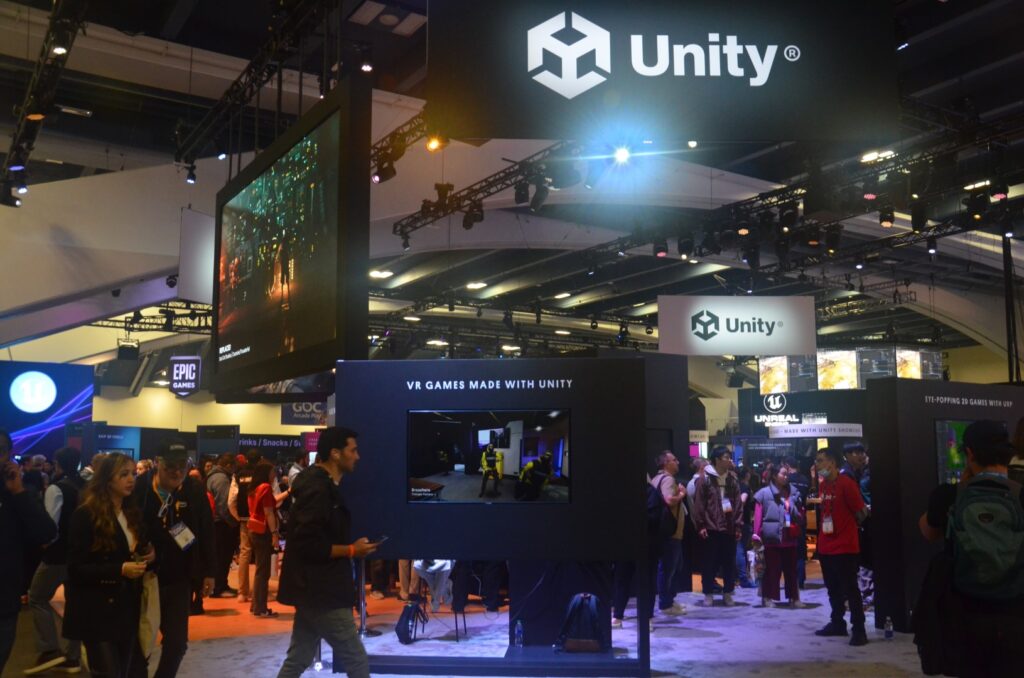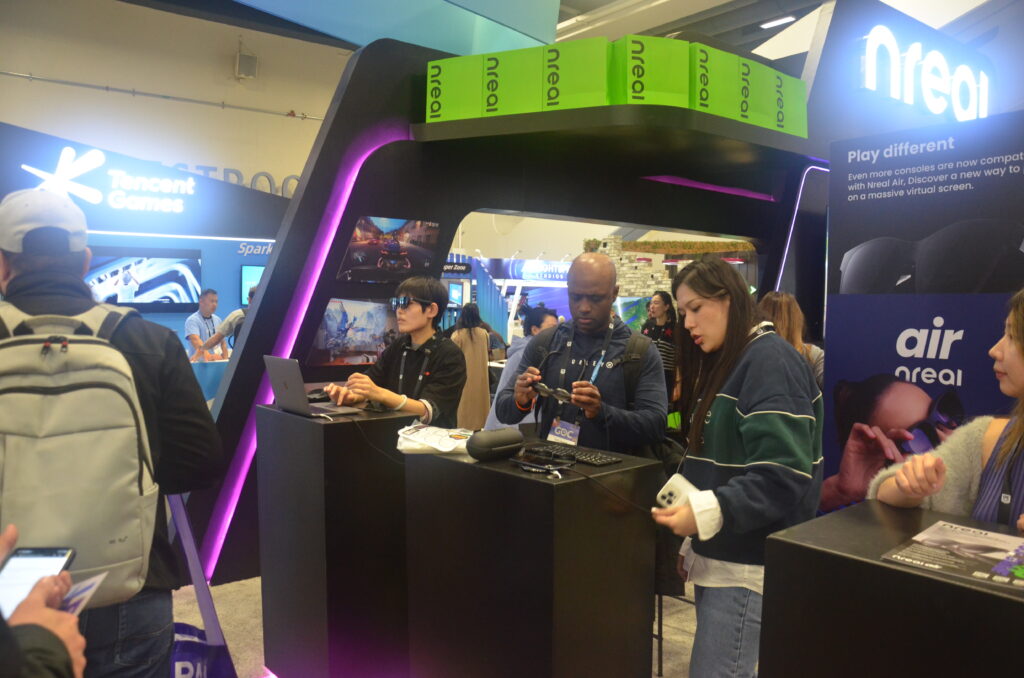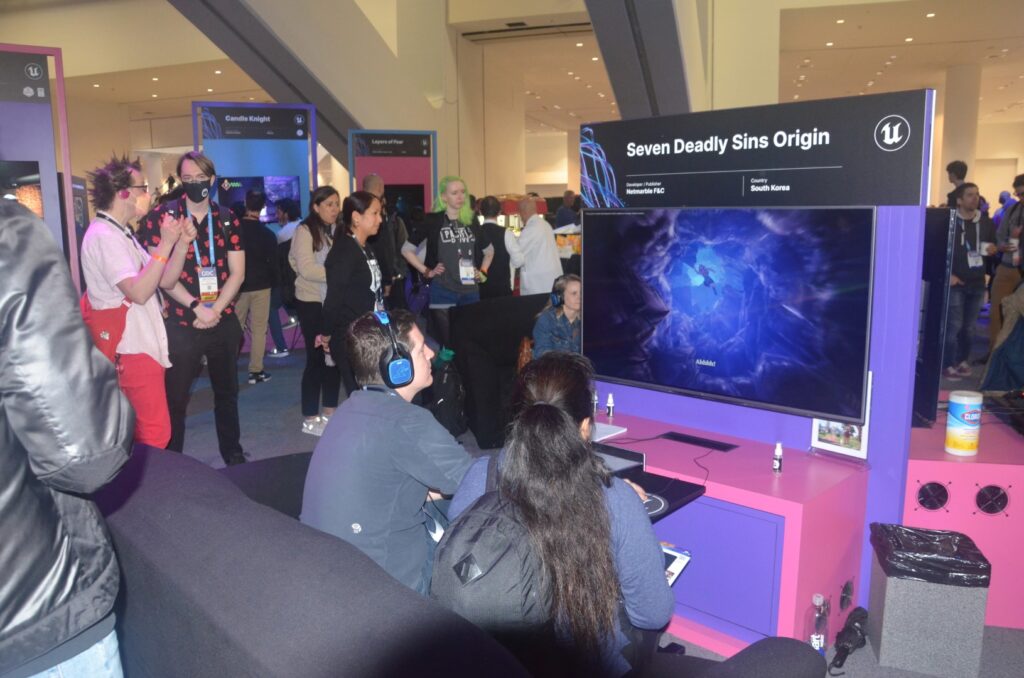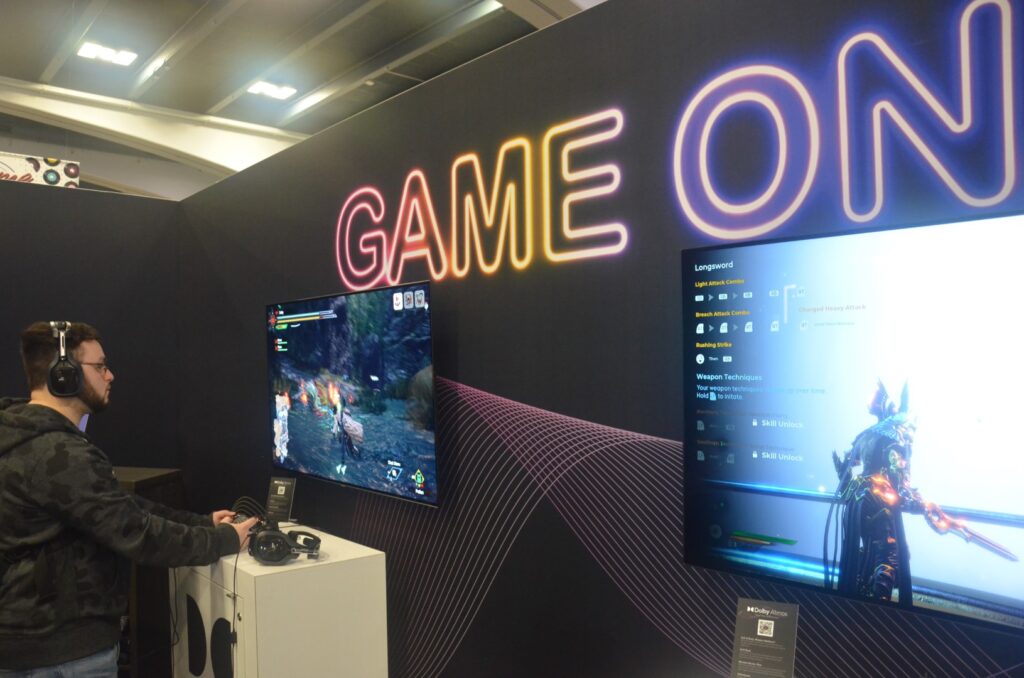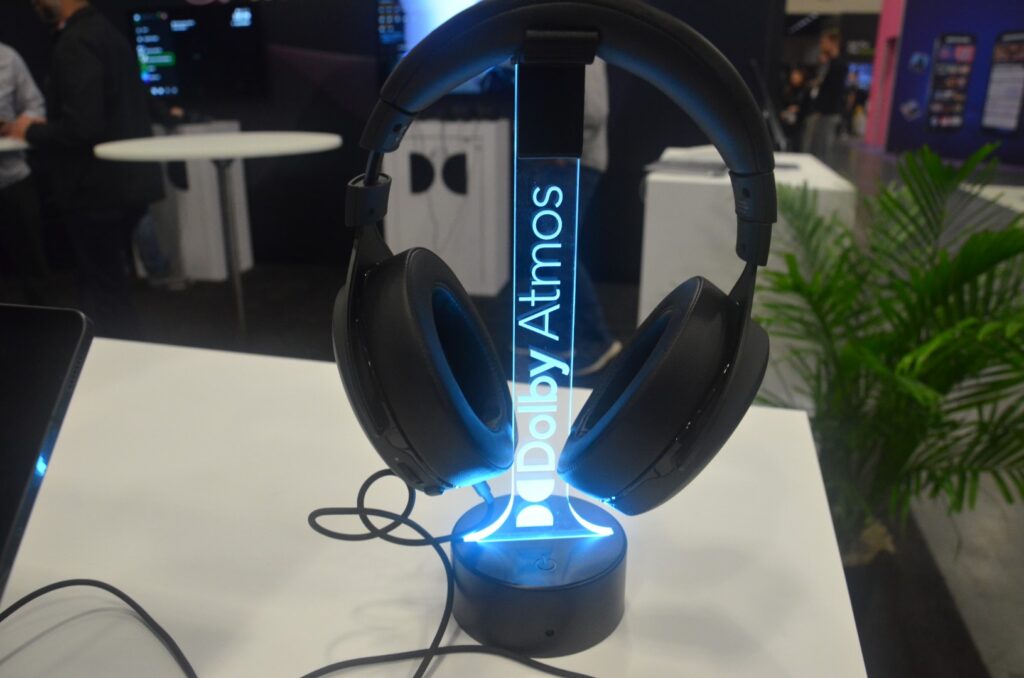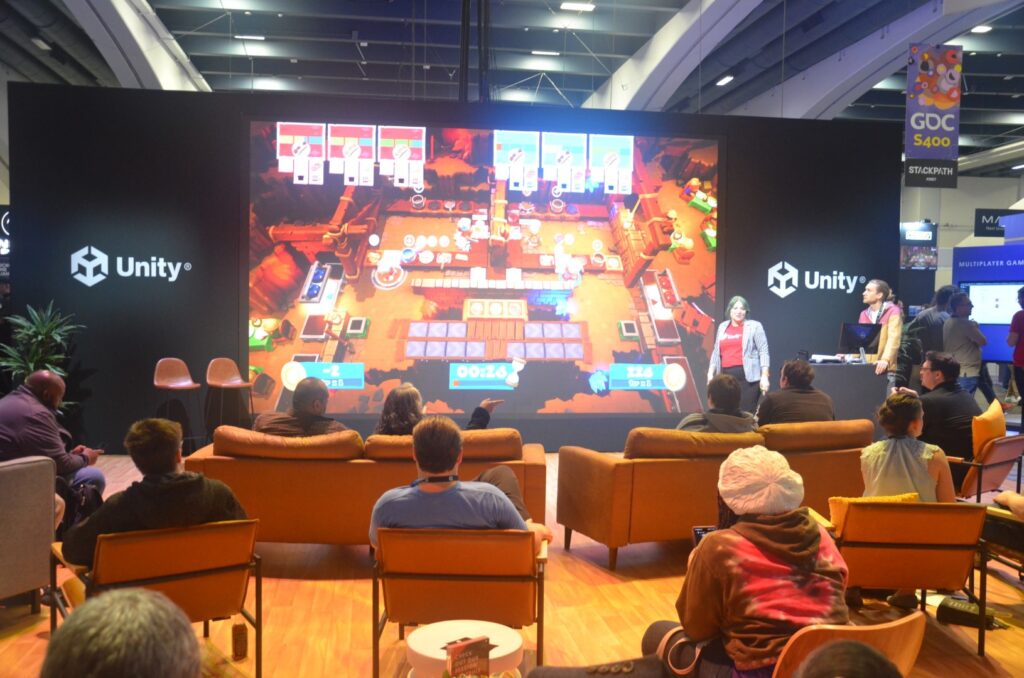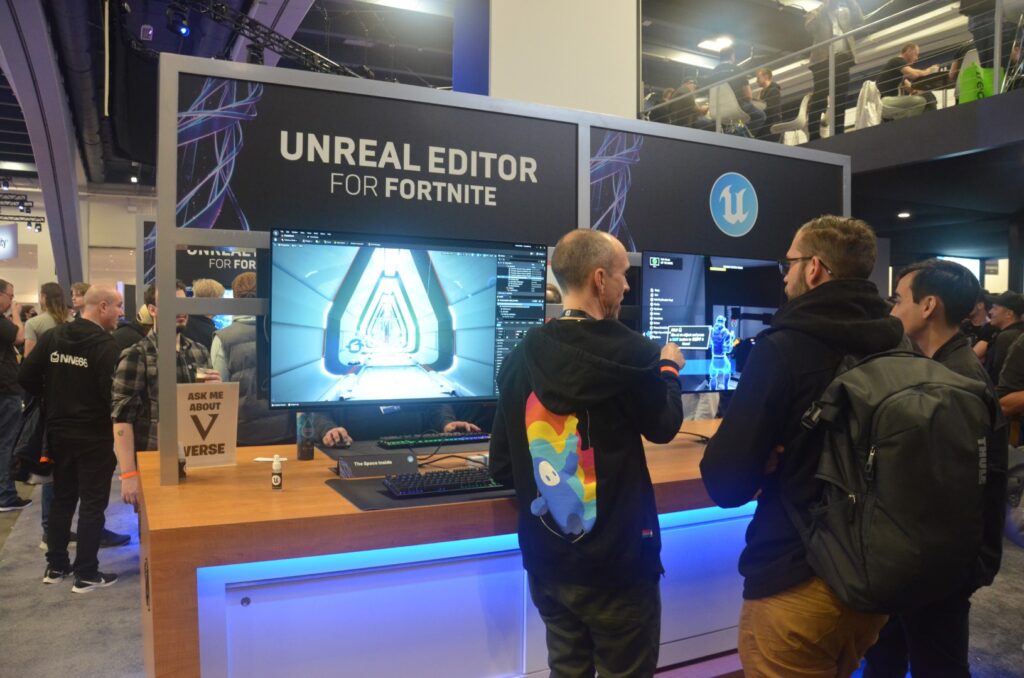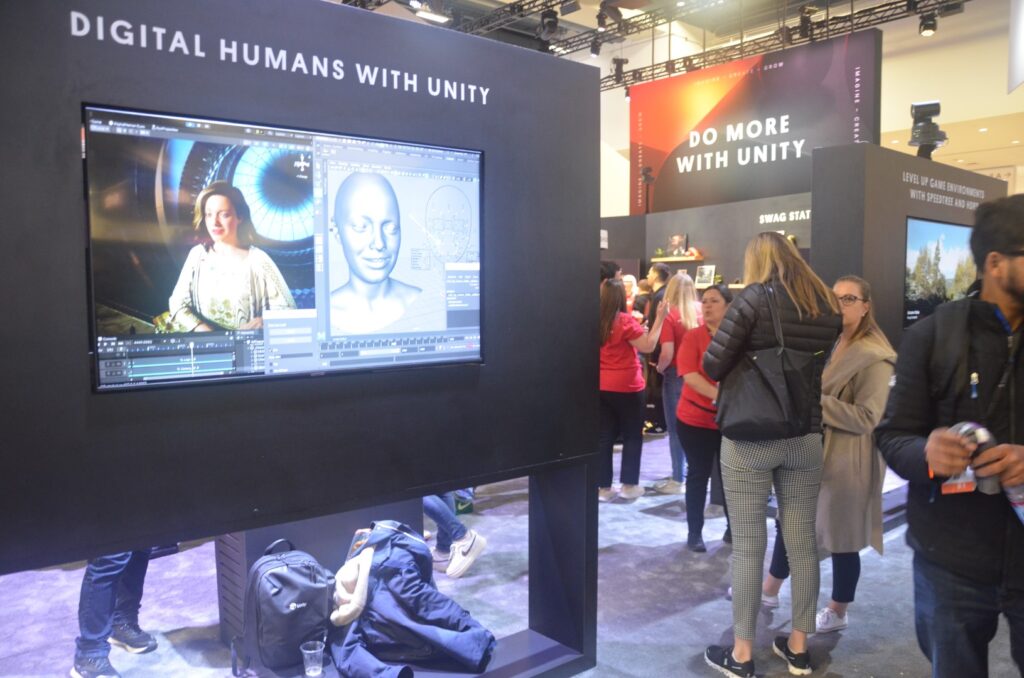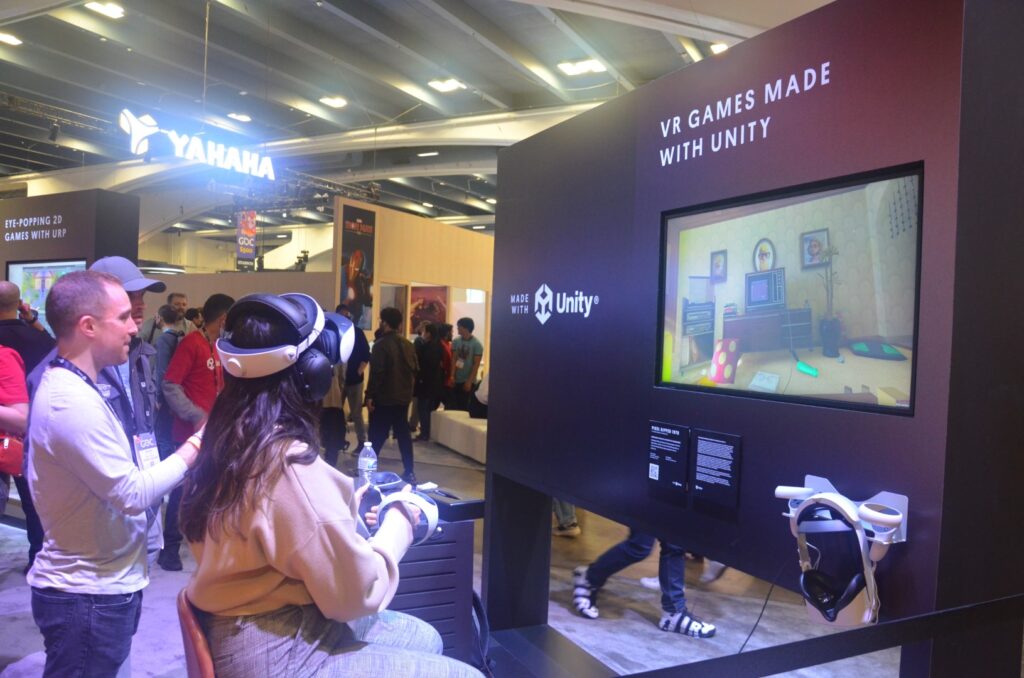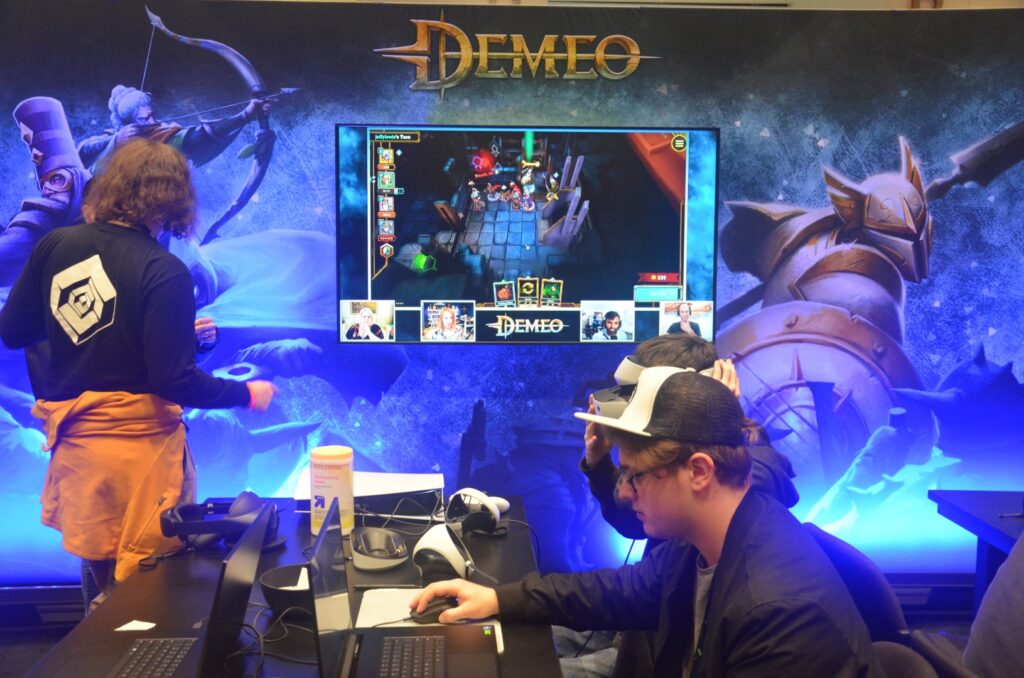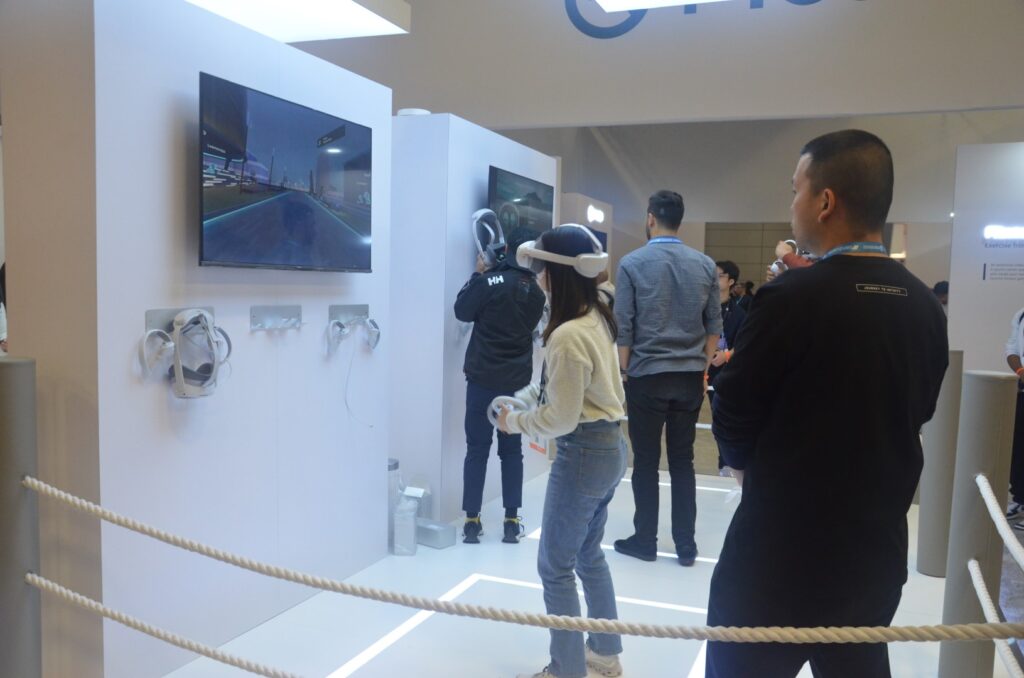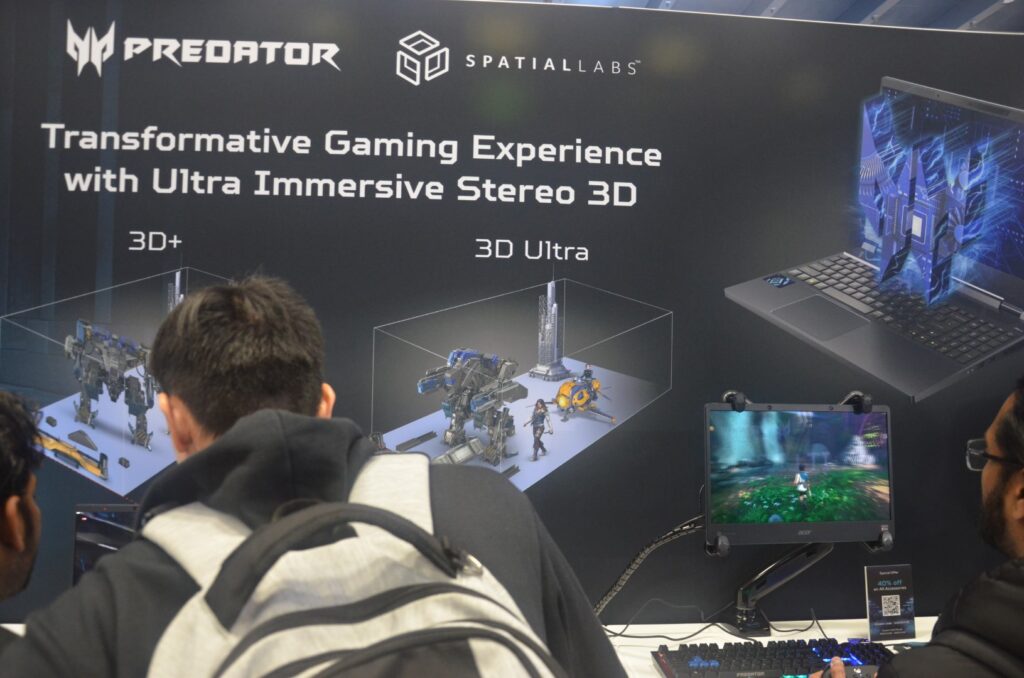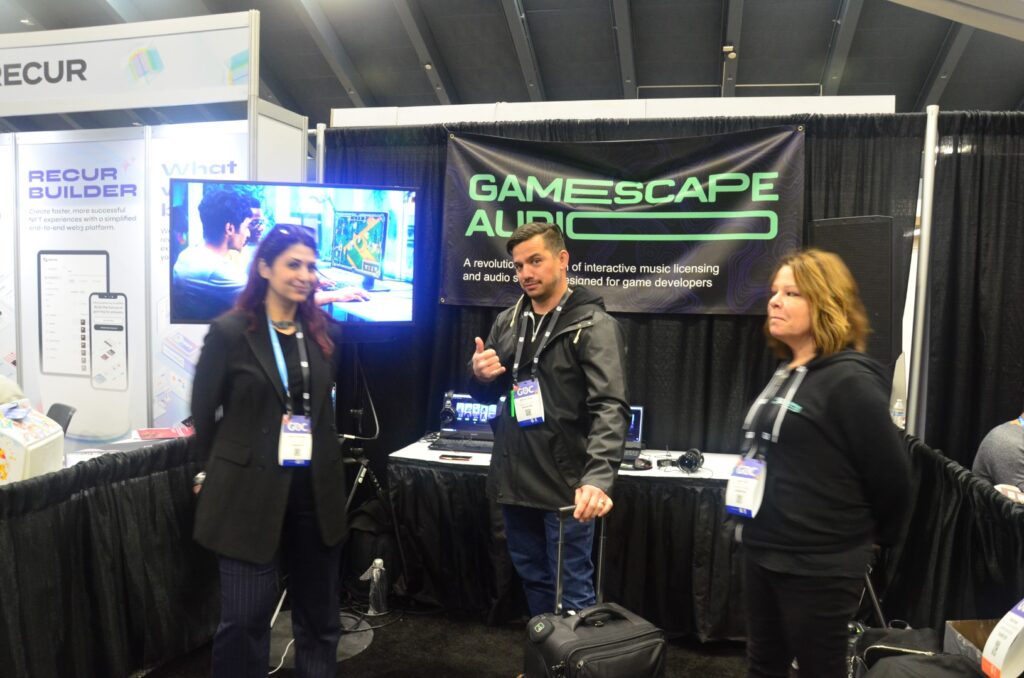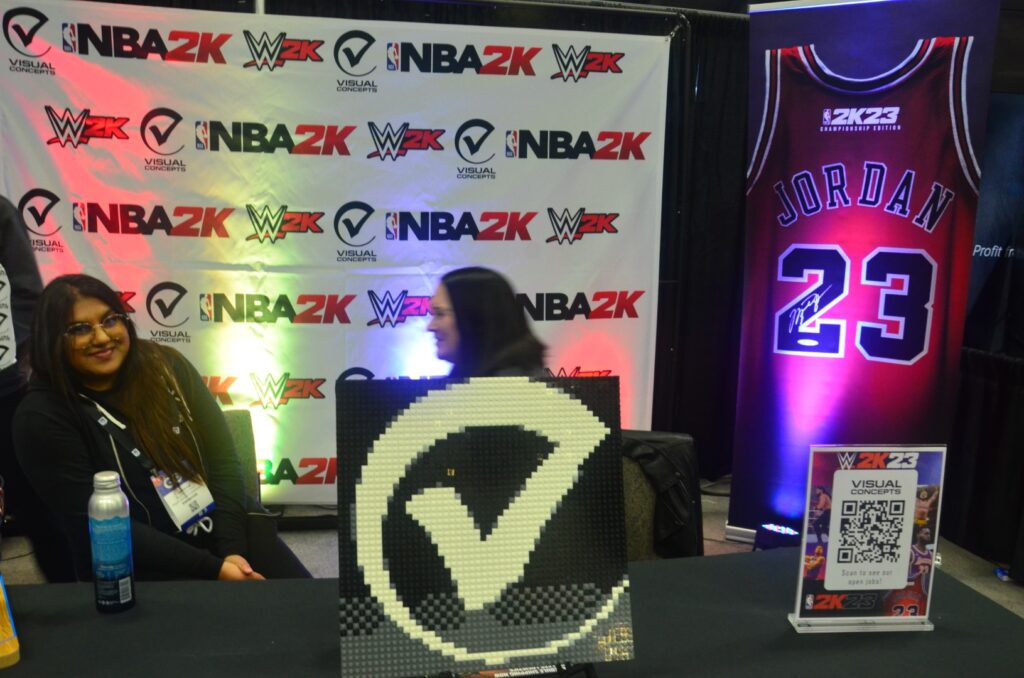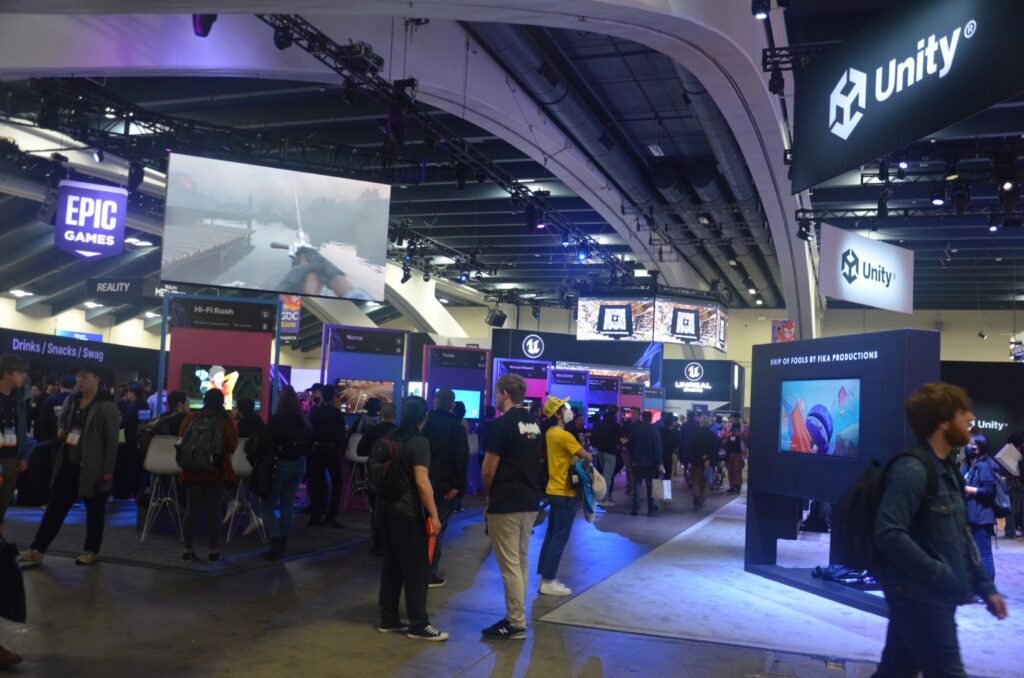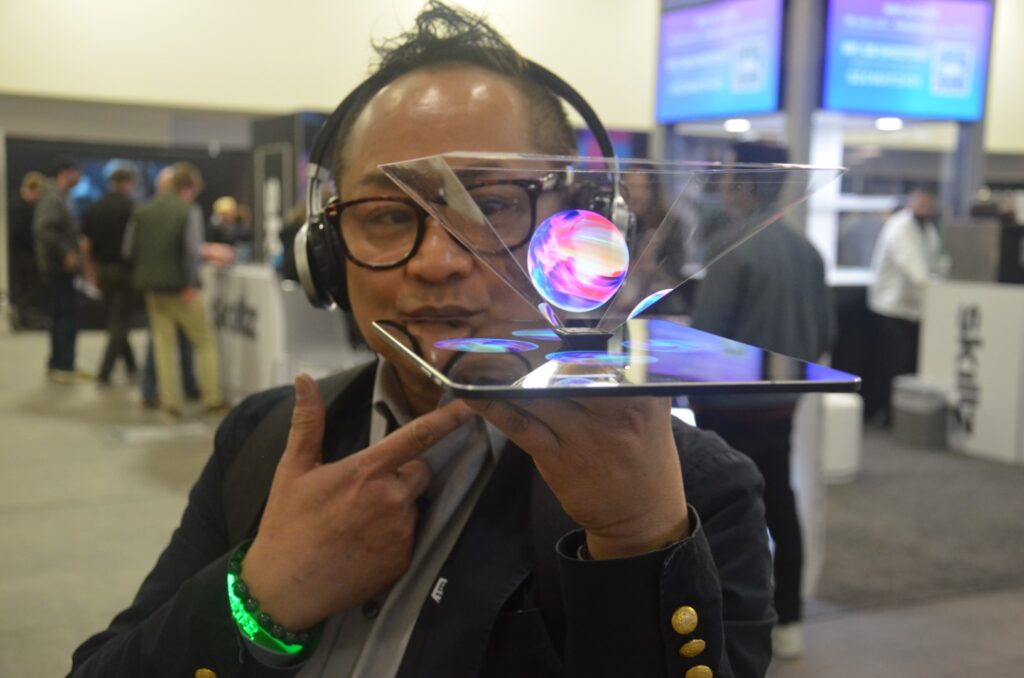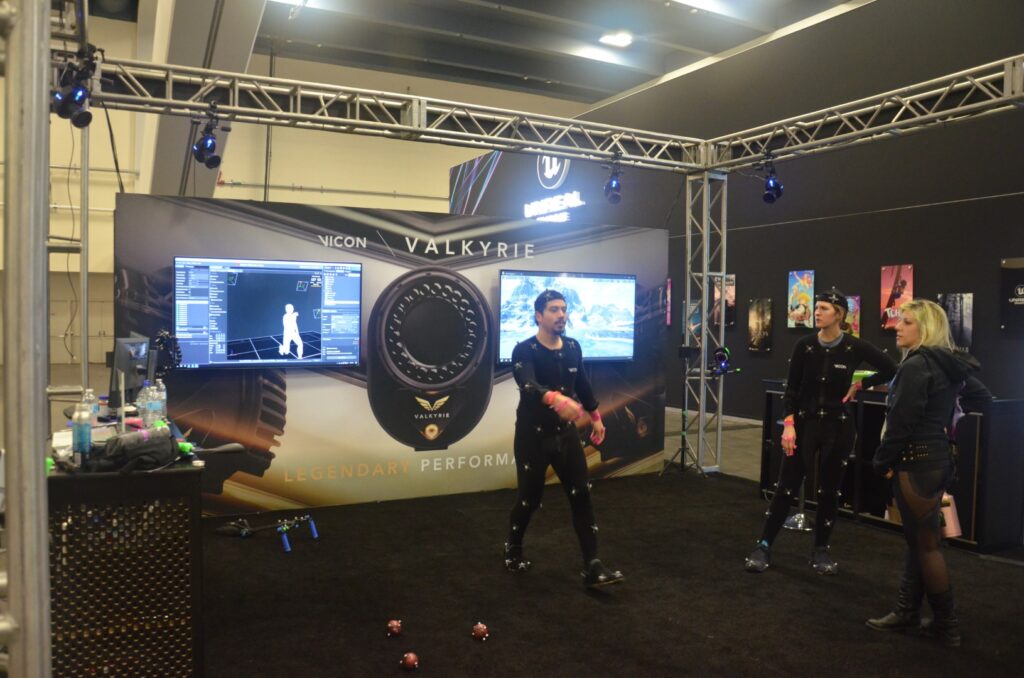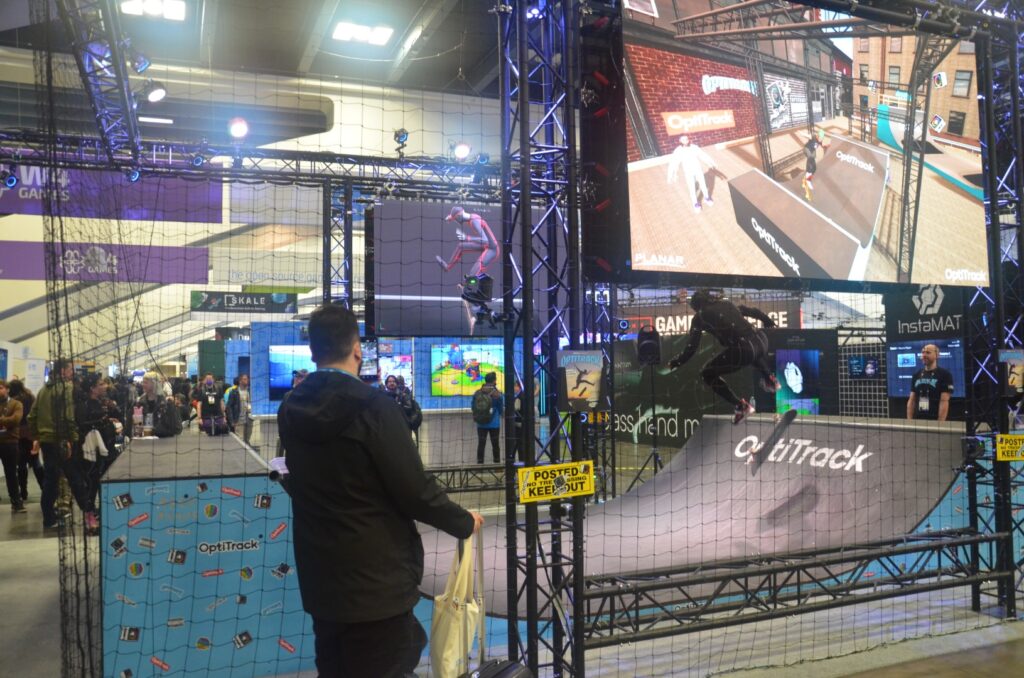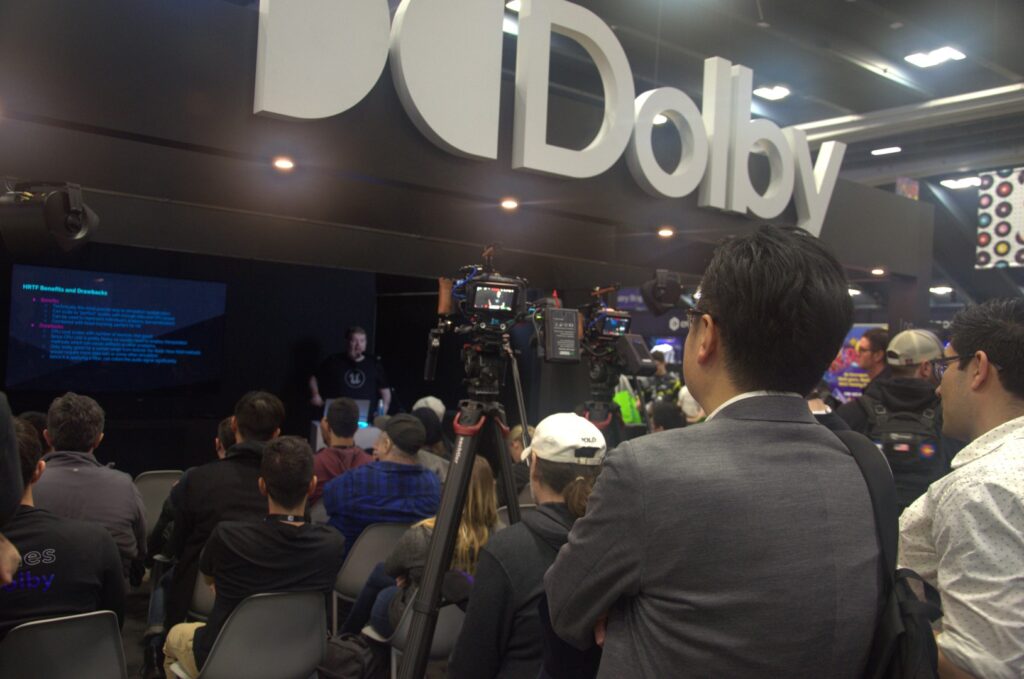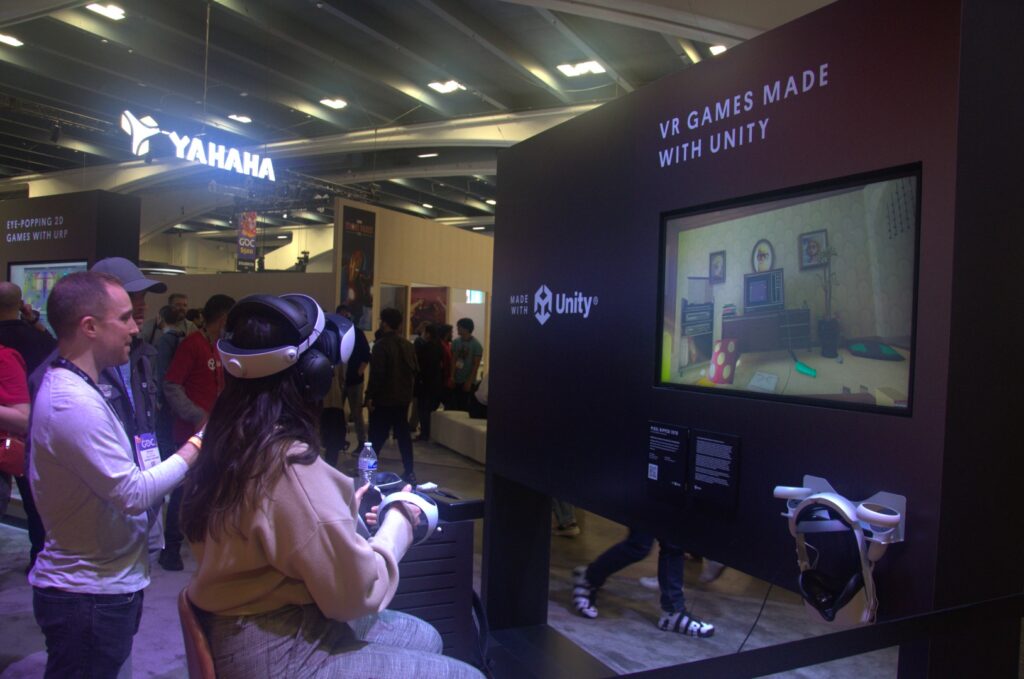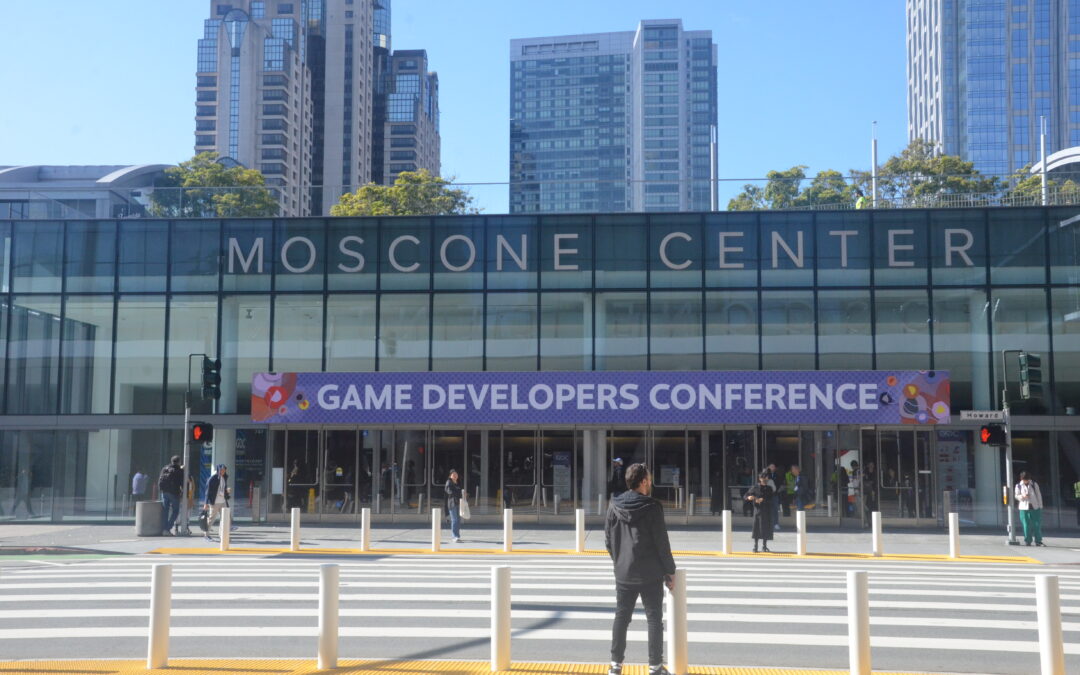
The 2023 Game Developer’s Conference
You could feel the sheer excitement in the air surrounding San Francisco’s Moscone Center where exhibitor’s and attendees convened at the 2023 Game Developer’s Conference. It recently happened a few weeks ago from March 20th thru the 24th when the Games Developer’s Conference tied its pre-pandemic record of 28,000 attendees in San Francisco that was set in 2019, more than doubling the number of in-person attendees from last year at San Francisco’s Moscone Convention Center.
It was all about the return of the “in-person” experience, having the strong desire and necessity of connecting with one another. Whether it was at one of the many numerous and inspiring sessions that was going on all week, or in one of the populated halls on the expo floor with some of the biggest names in the gaming world, or at a social mixer networking party with peers and leaders in the games industry; everyone seemed eager to seek and discover connections and to gain insight within their craft.
It seemed as though the conference hadn’t missed a beat since the pandemic.
For those who are unfamiliar with GDC, The Game Developers Conference® (GDC) is the world’s largest professional game industry event with market-defining content for programmers, artists, producers, game designers, audio professionals, business decision-makers, and others involved in the development of interactive games and immersive experiences. It also is the world’s largest and longest-running event serving professionals dedicated to the art and science of making games
All in all, GDC 2023 featured more than 1,000 speakers and 700+ sessions, workshops, roundtable discussions and networking opportunities. 330+ exhibitors were present to display their newest technologies, programs and services on the GDC Expo Floor, including industry leaders like Amazon Web Services, Adobe, Discord, Google, NEXON and more.
It was also a space for attendees to play and connect with the developers behind new and exciting independent games, including the finalists from the Independent Games Festival (IGF) and the alt.ctrl.GDC exhibit that is home to games that use alternative controllers like toaster ovens, giant oversized hats and others.
When you walk in the entrance on the South Side, some of the biggest name in gaming with attendees waiting in line for a demo as soon as they entered the hall, including Meta and Sony. Unity and Unreal were to the left of them and had even bigger booths with lots of play space. In fact, many of the companies were not signing anyone up for demos because they filled up within the first hour after the expo opened. Sign ups were available the next morning, as soon as they opened at 10 am, but filled up quickly. What I noticed this year compared to previous years is that there are more companies are using VR/AR/MR/XR and smart glasses for immersive gaming.
WELCOME TO THE METAWORLD
At the Meta booth, they had four demos, including Demeo, Ironman, Among Us, and a Mixed Reality Fencing Prototype which is the one I participated in. I requested the demo that would make use of the Meta Quest Pro, their flagship VR goggles. Unfortunately, Meta was having some wi-fi or battery issues and it took awhile to fix, but when it worked, I had a blast in my ten minute slot sword fighting against my opponent on the other side of the wall.
My opponent quickly got up to ten points, and just when I thought it was over, I was quick to go for another ten rounds. I was able to come out victorious. Ironically, after meeting my opponent, I found out he used to fence in Finland. Not sure if I should try the real thing next time I’m in Europe.
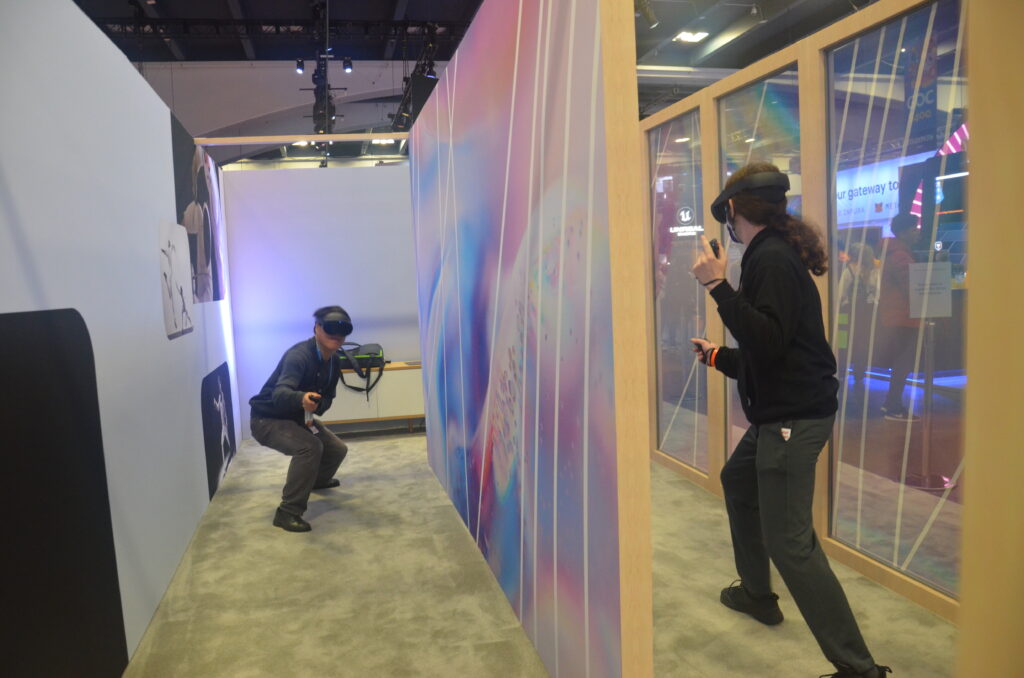
A Meta rep also was roaming around the booth and touting their new Meta-Ray Ban glasses. She had me put them on and told me that they can capture what you are seeing in real time. Meta’s first generation of smart glasses have built-in cameras, open-ear audio, and seamless social sharing. Sort of a POV for the user that is sharable to others.
I can imagine that people may not have rush out and shoot with their smartphones any longer, if they wanted to capture something spontaneously by the touch of their finger. I immediately thought that this would be a great way to monitor the world around us and share our experiences together, as it doesn’t necessarily need to be for game sharing purposes. Perhaps, it could cut down on crime, since we might all be wearing these on a daily basis?
AUGMENTED REALITY IS JUST NREAL
Another company that I was happy to see having a nice booth at the Expo Hall was Nreal. I was first introduced to them at the Augmented World Expo in Santa Clara in 2019 and wrote about them with their impressive augmented reality technology. This time, they were demonstrated their latest “Air” AR Glasses on laptops and smartphones, which reminds me of Google Glass, but has much better promise.
My first impression with these ultra-lightweight Nreal Air glasses, which could easily be confused as regular fashion sunglasses, is an amazing 201″ spatial display that gets casted from your device, whether it’s streaming from a game on the cloud, a compatible smartphone, or a iMac.
It has Micro-OLED panels and it is just has an amazing immersive display. As I put them on, I was looking at floating apps and browsers that I could select with my mouse, and be transported watching videos. Imagine watching Netflix or having a big screen for cloud gaming on the big screen anywhere you go.
META’S MAIN COMPETITOR?
If there is a Meta competitor on the Expo floor, it would probably be Pico from China who made their debut at GDC. They had a nice booth showing the evolution of their hardware products over they years, much displayed like it would be at a VR museum, if there was one.
The release of their Pico 4 was getting some buzz on the floor, but didn’t get any official announcement when it would actually be released. This is probably due to the fact that their parent company, Bytedance, also owns TikTok, is still trying to settle with the Senate hearings.
What a great time to be a game developer! Here are a slideshow of a few scenes from the Expo floor.
originally published on https://mlsentertainment.wordpress.com/2023/04/21/the-2023-game-developers-conference-future-glimpse-of-the-latest-spectacles/
